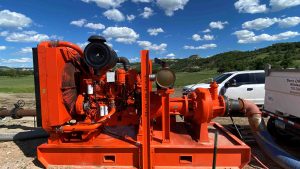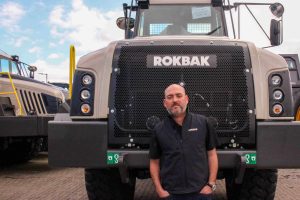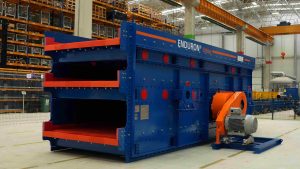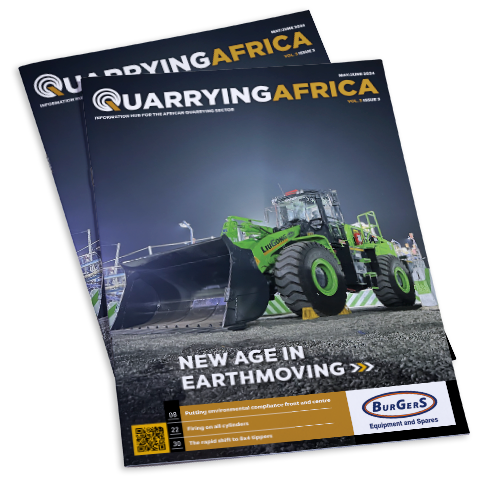Aggregate producers in Africa have always been aware of the benefits of hybrid crushing and screening solutions, but in the early years the upfront cost of this technology slowed its uptake.
According to Tyron Ravenscroft, Finlay product manager at Bell Equipment, in recent months, as fuel prices soar to record levels, there has been a definite interest in hybrid mobile crushing and screening solutions, especially in the mining industry, where the company has recorded significant sales to date.
“Buying hybrid technology now makes more sense than ever before as fuel savings offset and justify the premium capital cost of this advanced technology,” he says.

The range
Bell Equipment has been supplying Finlay dual-powered units in southern Africa since 2015, which offer operators the flexibility to power the plant either by mains electric connection or the onboard genset. The company has recorded notable successes, with several units operating in Zambia and South Africa.
The range includes the dual power Finlay J-1175 jaw crusher, the Finlay C-1540 cone crusher, the Finlay 694+ and 696+ inclined screens, the Finlay 883+ scalper, as well as the Finlay TC-80 tracked conveyor and Finlay TR-75 radial stacker.
“The dual power Finlay J-1175 jaw crusher incorporates the robust JW42 high performance, electrically driven, single toggle jaw chamber, and a heavy duty vibrating grizzly feeder (VGF) for optimum production. Additional benefits include rapid set-up time, ease of maintenance, high reduction ratio, high output capacity and an advanced electronic control system,” explains Ravenscroft.
The dual-powered Finlay C-1540 cone crusher incorporates the proven Terex 1000 cone crusher. In applications where a full train is powered by the onboard genset configuration, the crushers generate sufficient energy to enable the operator to run the dual power inclined screen for ‘free’ when used in conjunction with the dual power jaw crusher with direct electric drive, automatic tramp relief and a hydraulic CSS adjustment.
The C-1540 can be fitted with an optional patented pre-screen module which allows fine material to bypass the crushing chamber, thus reducing wear rates in the crushing chamber. The fines can be prepared separately and discharged via the optional onboard side conveyor.
The large hopper/feeder has an automated metal detection and purge system to protect the cone and reduce downtime by removing metal contaminants via the purge chute.
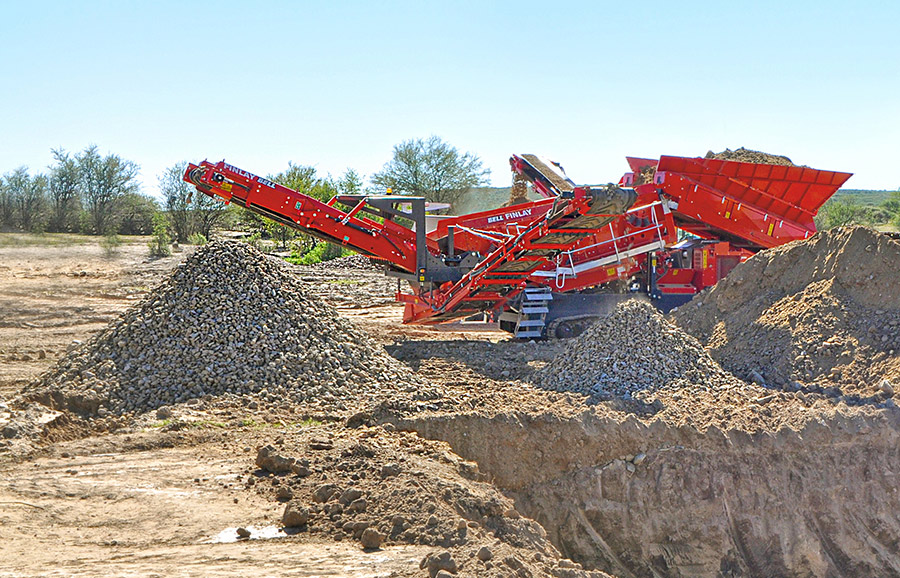
The Finlay 694+ dual power inclined screen comes standard with two 37 kW IE2 electric motors which operate at 50 Hz. However, a 60 Hz and/or IE3 set-up can be configured to suit particular regions.
“The intuitive and user-friendly electrical and hydraulic systems allow the customer to toggle between diesel and electric mode at the flick of a switch. The primary operation and controls of the machine remain the same regardless of the selected power mode,” says Ravenscroft.
The unit features a large 6,1 m x 1,53 m triple deck inclined screen with a total screening area of 28 m² to provide efficient screening and high capacity. An innovative, hydraulically folded fourth conveyor allows simple adjustment with various tilt and slew discharge points, between 18° and 30°, for recirculating (in closed circuit with a crusher) or stockpiling of finished material. By comparison, the Finlay 693+ dual power inclined screen features two full sized 6,1 m x 1,53 m decks with a total screening area of 18,7 m².
The Finlay 883+ hybrid scalper is designed to work after a primary crusher or as a frontline-tracked mobile screening machine. Applications include quarrying, mining construction and demolition debris, topsoil, recycling, sand, gravel, coal and aggregates. The plant has the capacity to process up to 600 tonnes per hour and can be fed either by a tracked mobile crusher, shovel or an excavator.
Key features include a modular configuration screen box with a 4,8 m x 1,53 m top deck and a 4,8 m x 1,53 m bottom deck screen. The screen box can be hydraulically adjusted to an angle between 13° and 19°. The screen box discharge end can be hydraulically raised 500 mm upwards to facilitate efficient and easy media access and changing. The aggressive screen box can accept bofor bars, speedharps, woven mesh, punch plate, tines and cascade fingers.
The Finlay TC-80 tracked conveyor and Finlay TR-75 radial stacker are also available with hybrid technology. The TC-80 has a conveyor length of 23,5 m and a belt width of 1 050 mm. The unit has a discharge height of 9,95 m at 24° and a stockpile capacity of 1 806 m3, also at 24°. The TC-80 has a capacity of up to 500 tonnes per hour (tph).
“The TR-75 discharges in a kidney bean shape and features an automated radial left-to-right drive to stop points selected on the control panel. This unit has a conveyor length of 22,9 m, a belt width of 1 050 m and a capacity of up to 600 tph,” says Ravenscroft.
Benefits
Hybrid crushing and screening solutions offer a range of benefits, including superior performance at high altitude and in dusty operating environments; no servicing of engine; no refuelling of engine, reduced noise when running; and reduced running costs.
“The major benefit of dual power technology is that the crushing and screening units are electrically driven, allowing them to be powered from either an external electrical supply or from their on-board gensets, thus reducing running costs significantly. In applications where a full train is powered by the onboard genset configuration, the crushers generate sufficient energy to enable the operator to run the dual power inclined screen for ‘free’ when used in conjunction with the dual power jaw crusher,” concludes Ravenscroft.

